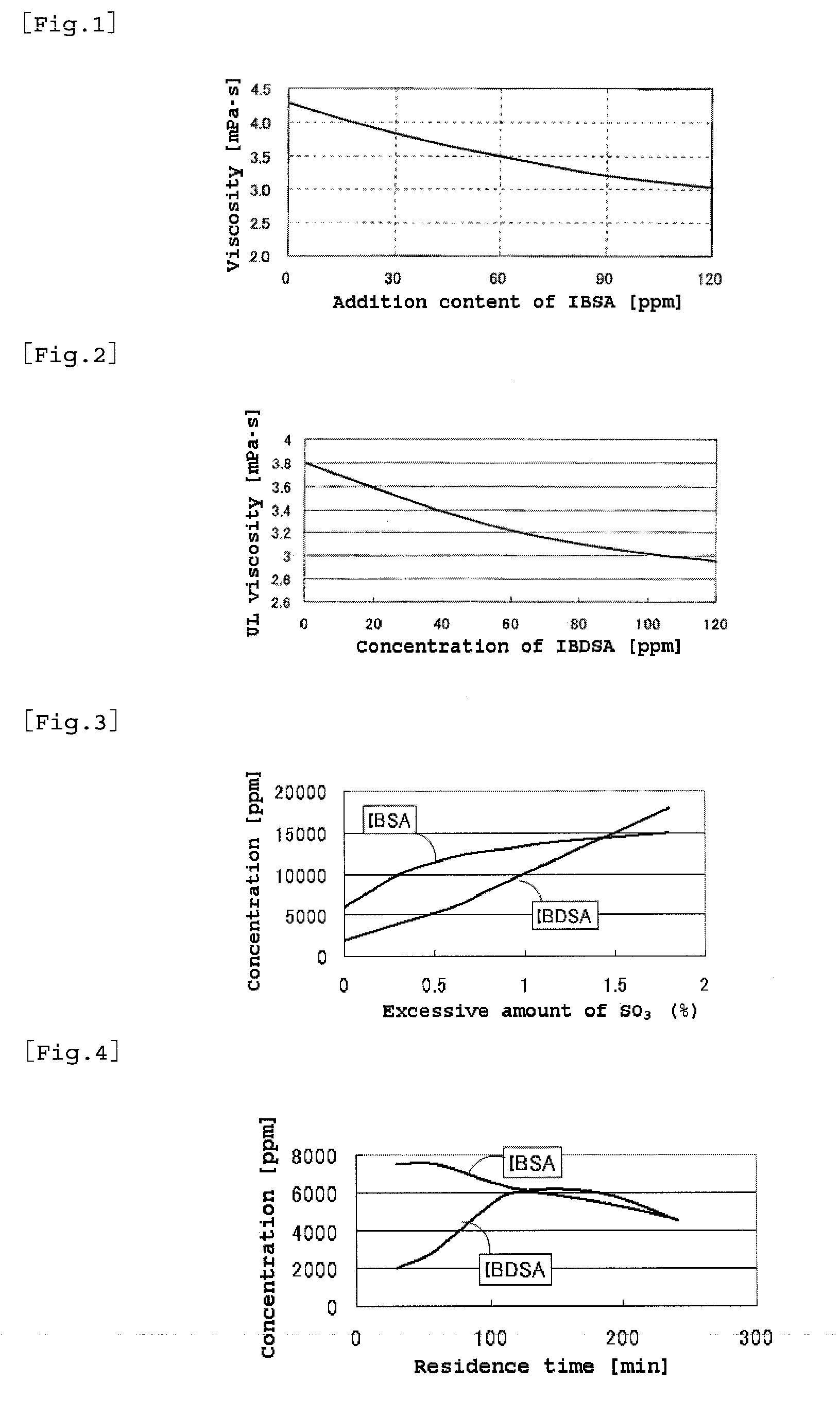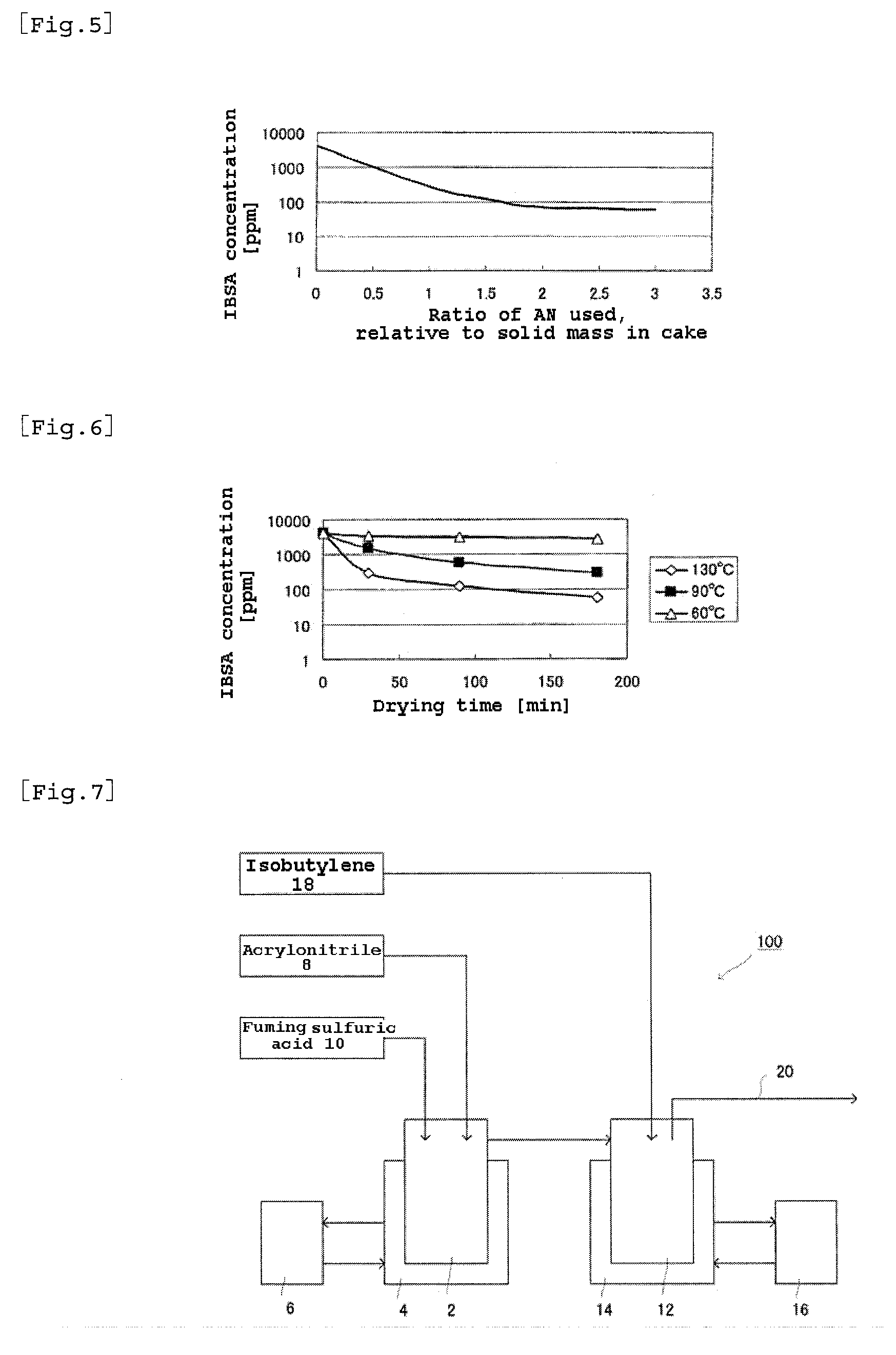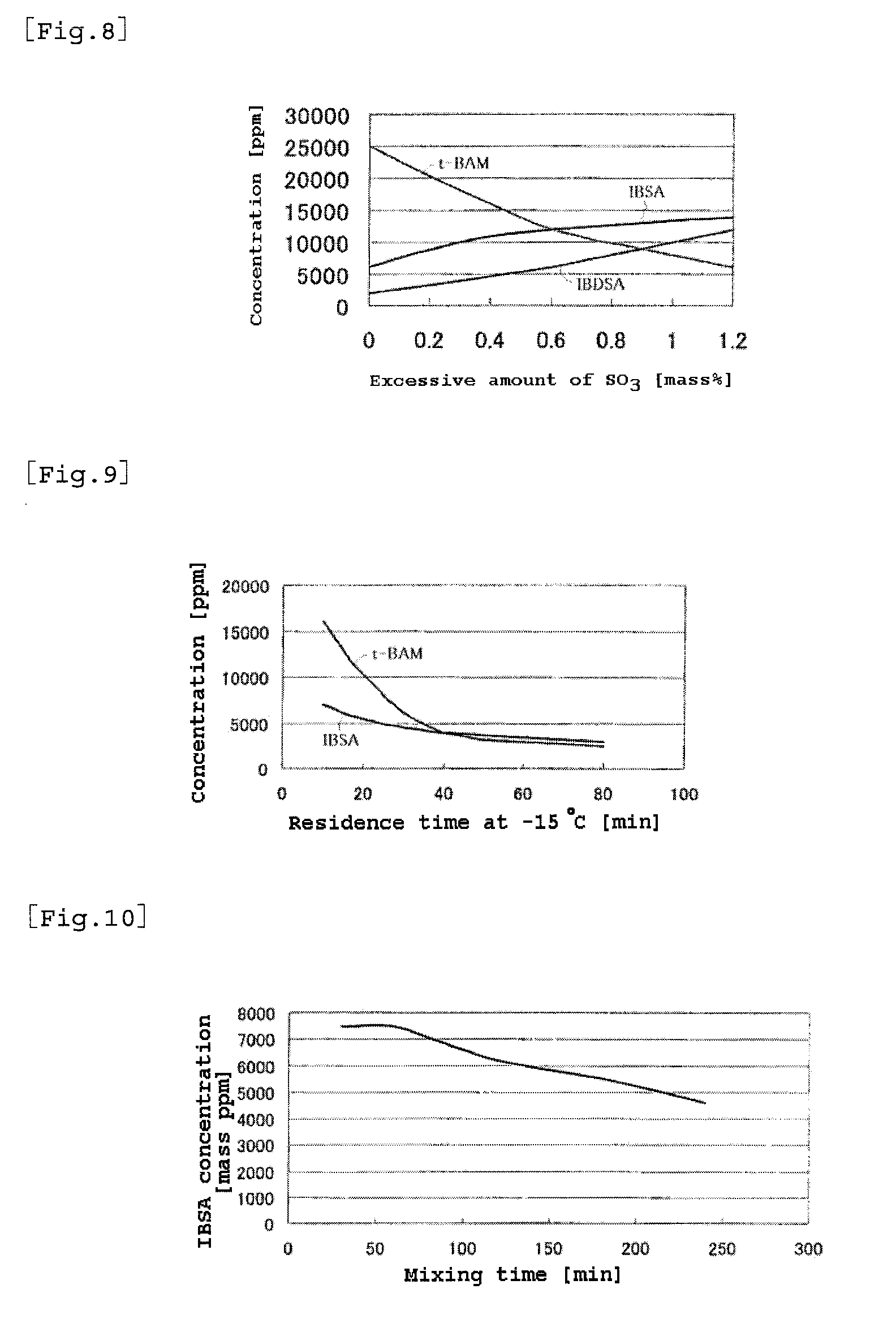2-acrylamide-2-methylpropanesulfonic acid and process for producing the same
a technology of methylpropanesulfonic acid and acrylamide, which is applied in the field of 2acrylamide2methylpropanesulfonic acid, can solve the problems of insufficient purification, inability to precisely identify the substances affecting atbs polymerization, and excessive purification, and achieves easy production, high purity, and large molecular weight.
- Summary
- Abstract
- Description
- Claims
- Application Information
AI Technical Summary
Benefits of technology
Problems solved by technology
Method used
Image
Examples
examples
[0160]The present invention is described specifically below by way of Examples. The concentration shown in each Example is a concentration quantitatively determined by HPLC.[0161]HPLC condition: high performance liquid chromatograph produced by Waters[0162]Column: ODS-3 produced by GL Science[0163]Elutant: 0.03% aqueous trifluoroacetic acid solution / acetonitrile[0164]Flow rate of elutant: 0.8 ml / min[0165]Detection wavelength: 200 nm
first embodiment
Invention of First Embodiment
Example 1
[0166]Two glass reactors each provided with a stirrer, an inlet pipe and an outlet pipe were connected to each other. Acrylonitrile and fuming sulfuric acid were fed into the first reactor under the following conditions. They were mixed and the mixed fluid thereof was fed into the second reactor. In the second reactor, isobutylene gas was blown into the mixed fluid to synthesize ATBS. The reaction (synthesis) was conducted continuously.
[0167]Acrylonitrile and isobutylene were fed into respective reactors at proportions of 11 mole and 0.9 mole, respectively, both relative to 1 mole of fuming sulfuric acid. The feeding rate of fuming sulfuric acid was 1.6 mole / hour and the reaction was continuously conducted for 12 hours. During the reaction, a sample of the reaction mixture was taken and measured for IBSA and IBDSA concentrations by HPLC and the feeding amount of fuming sulfuric acid was controlled as shown in Table 2.
[0168]Incidentally, the conc...
example 2
[0180]In Example 1, the amount of acrylonitrile used for cake washing was halved. Since the remaining of IBSA could be predicted from the data of FIG. 5, drying was conducted at 110° C. (higher than ordinary drying temperature) for 90 minutes, in order to reduce IBSA. The ATBS powder obtained was analyzed by HPLC. A copolymer of ATBS and acrylamide was produced in the same manner as in Example 1. The copolymer was measured for viscosity in the same manner as in Example 1. The result is shown in Table 2.
PUM
| Property | Measurement | Unit |
|---|---|---|
| Temperature | aaaaa | aaaaa |
| Temperature | aaaaa | aaaaa |
| Temperature | aaaaa | aaaaa |
Abstract
Description
Claims
Application Information
 Login to View More
Login to View More - R&D
- Intellectual Property
- Life Sciences
- Materials
- Tech Scout
- Unparalleled Data Quality
- Higher Quality Content
- 60% Fewer Hallucinations
Browse by: Latest US Patents, China's latest patents, Technical Efficacy Thesaurus, Application Domain, Technology Topic, Popular Technical Reports.
© 2025 PatSnap. All rights reserved.Legal|Privacy policy|Modern Slavery Act Transparency Statement|Sitemap|About US| Contact US: help@patsnap.com



